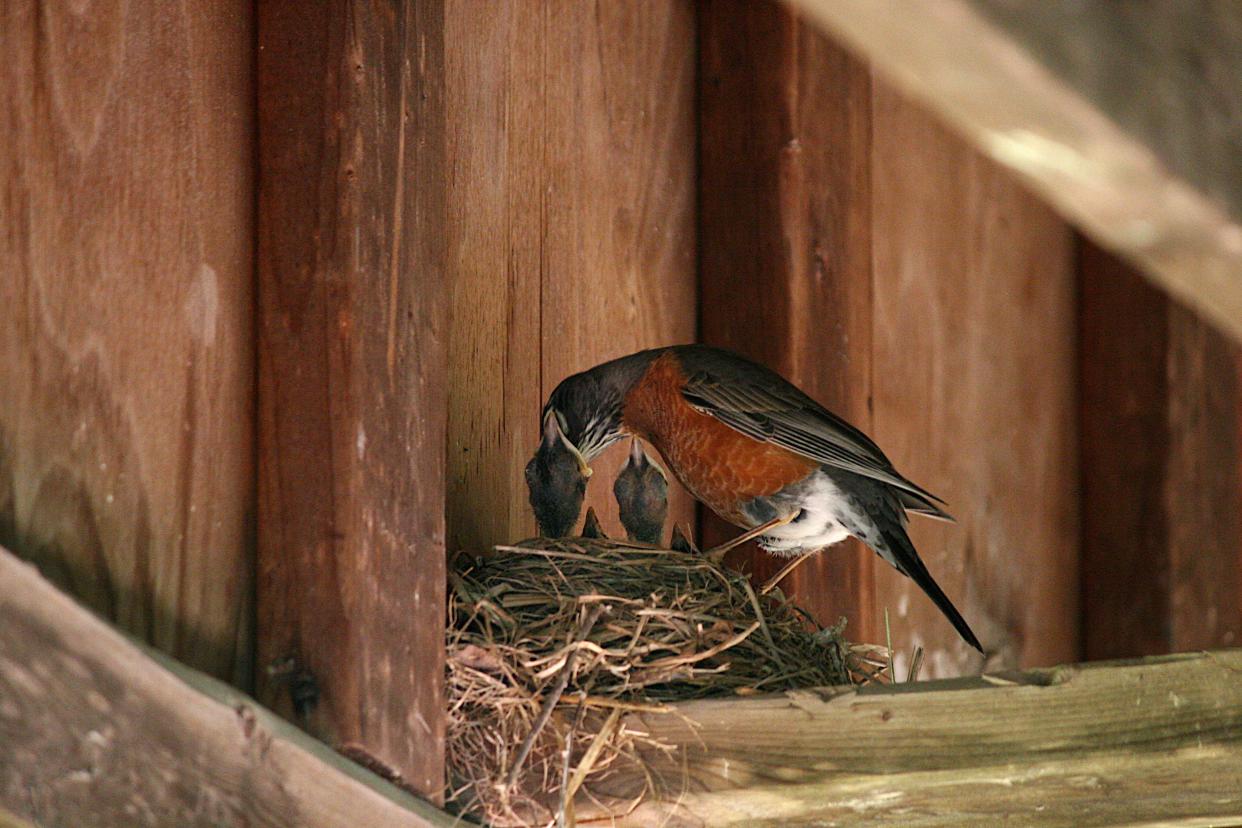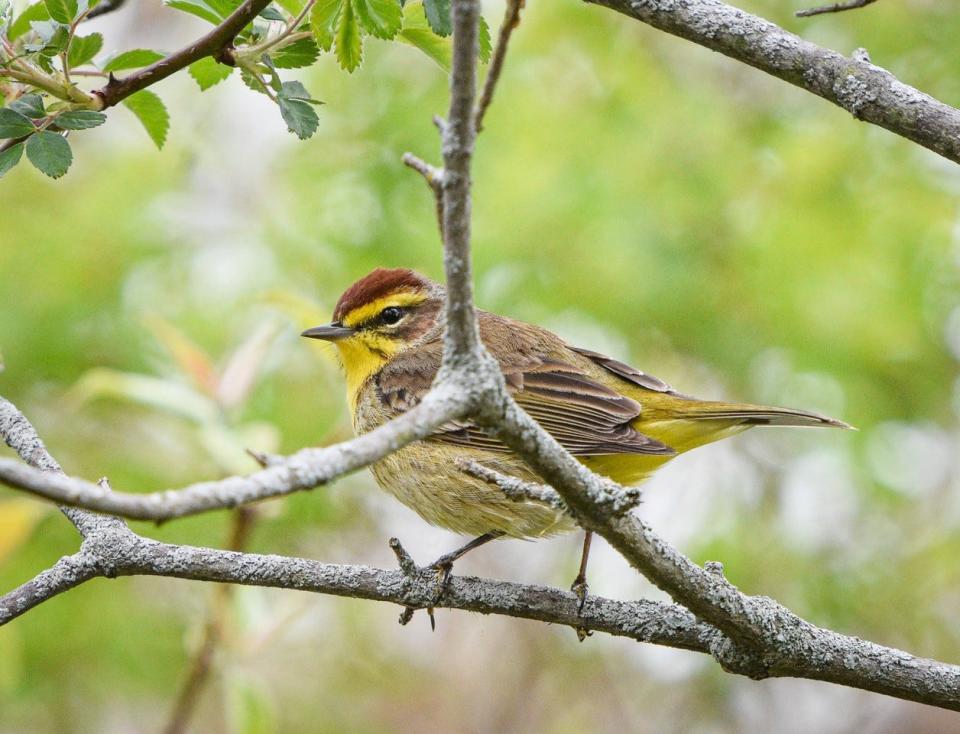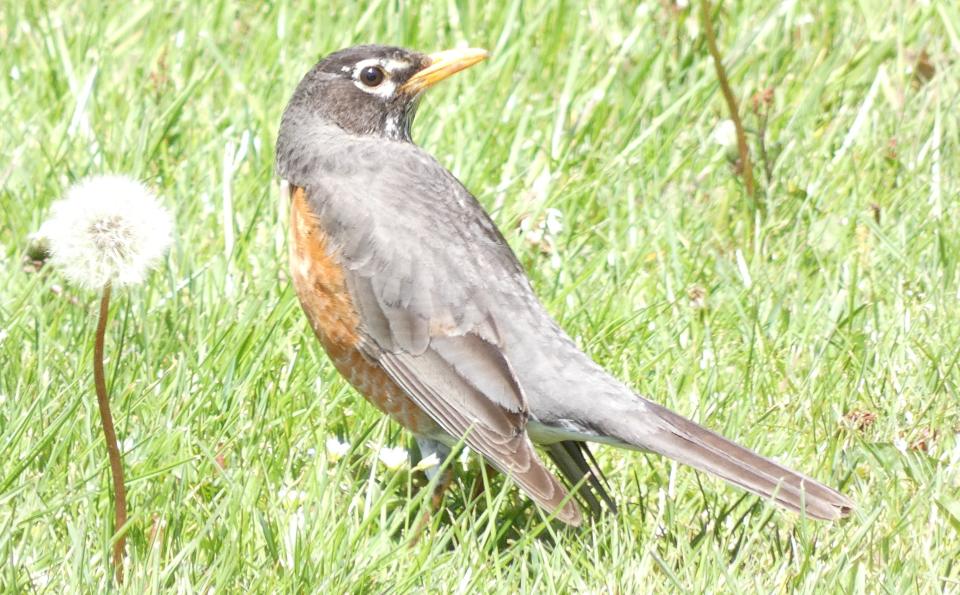Migratory birds are flying through the state in high numbers this week

Backyards across North Central Ohio have become a stage this month for the annual theatrical production known as The Biggest Week in American Birding.
It's the special time each spring when birds who have been south for the winter fly home via routes known to scientists as flyways. Ohio is a prime pitstop on those paths north.
Many of the migratory birds will travel thousands of miles before they select a place for their spring nests, according to Josh Dyer, director of the Crawford Park District.
"They've flown from places like Brazil, thousands of miles," Dyer said. "Some of them are going even further north... they'll pass through the boreal forest and get almost to basically the tundra area in Canada."
'We have them here'
Most people know to visit places like Magee Marsh Wildlife Area in Ottawa County, "The Warbler Capital of the World," to see flocks of migratory birds. An estimated 90,000 people from around the world converge on Northwest Ohio during the Biggest Week in American Birding.
But similar bird sightings can be found in North Central Ohio.
"We have them here," Dyer said. "Lake Erie gets a lot of the press because, not only is there some significant habitat up there, but the birds have to kind of refuel before they make the journey across Lake Erie. They will have thousands if not millions of birds settling into an area just overnight waiting for a weather front to cross the lake."
Although the birds might not spend as much time here as they will near the Great Lakes, they still have to fly through Ohio to get to their final destination. That often means they will stop for a few moments rest or to search for a quick snack.

"Anywhere along a body of water," Dyer said. "It's got cover and food, so they they're definitely going to take advantage of it. They call it 'stopover habitat'."
The week of birding May 5-14 in the Buckeye State has so many birds that it has its own page on the National Audubon Society's website.
"It’s one of the most exciting gatherings of birds and birders in the world, and it ought to be on every birder’s bucket list," Audubon's website reads.
The society offers locations across Ohio from north to south where birders can catch a glimpse of their favorite migrants.
"All told, sightings in Ohio can add up to a fine weekend," the website reads. "And, yes, even a very big week."
'Migration is basically in peak'
The influx of birds is so great in North Central Ohio this time of year that Crawford County's park district staff will host an annual bird banding event Saturday in conjunction with a pancake breakfast.
"Migration is basically in peak and full swing, so we're hoping for a good day," Dyer said.
This year's bird banding takes place 7 a.m. to 1 p.m. Saturday at Lowe-Volk Nature Center, 2401 Ohio 598 in Crestline. The pancake breakfast starts at 8 a.m. and is by donation. People from across the state are invited.

"It's a fun morning," Dyer said. "I always tell people that a bird in the hand is better than two in the bush."
The park director's goal each year is to get inside as quickly as possible to eat breakfast, but he is happy when a high number of visiting birds delay that treat for several hours.
"Last year we didn't eat pancakes until almost 11 o'clock because there were that many birds flying into the net," Dyer said.
Each time a bird is captured, the park staff document data from the creature, apply their marking band and set it free.
The bands follow an international standard that scientists from around the world understand.
"Some of the thrushes or warblers or tanagers, or any of the any of those birds that are migrating through that we put bands on, theoretically somebody in South America or Central America could capture that bird at their banding operation and report it," Dyer said. "We can possibly get some information on where our birds are actually coming from here."
Be sure not to stress nesting birds
They might not be as exotic as their migratory cousins, but Ohio's local birds are more exciting than ever during the spring.
Common sightings include the tufted titmouse, the blue jay and the state's bird, the cardinal. There's also the American robin, which many people believe is migratory.
"They're what are called short distance migrants," Dyer explained. "Our resident robins that are nesting now may have only gone down to Columbus just to kind of escape some of the harsh winter."
Now they are nesting and feeding their young profuse amounts of food.
"They're traveling to the nest, when they have hatchlings, upwards of 200 times a day," Dyer said.
The feeding habits are similar for all of Ohio's young birds. Even seed-eating species eat grubs when they are newly hatched.
"People underestimate the importance of caterpillars," Dyer said. "Those young birds are going to be getting fed caterpillars until they leave the nest."
And the nesting birds do not need our help, either. The park director said the best practice for people who are excited to see a nest is to keep a safe distance so that the birds do not become stressed or panicked.
"They're in survival mode and they know how to survive," Dyer said. "They've been doing it for a lot longer than we've been on this planet."
ztuggle@gannett.com
419-564-3508
Twitter: @zachtuggle
This article originally appeared on Mansfield News Journal: Migratory birds make local stops in Biggest Week in American Birding

